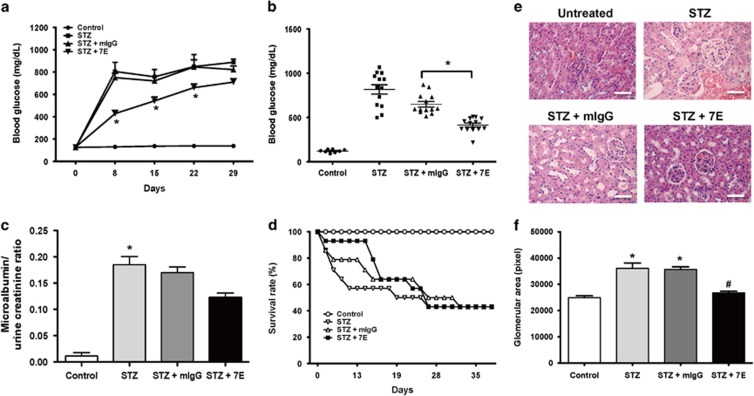Figure 4.
7E reduced the severity in high-dose STZ-induced early diabetic nephropathy. In the single high-dose STZ-injected model, the mice were divided into three groups: no treatment (STZ, n=13), 3 mg kg−1 7E (n=13) and 3 mg kg−1 control antibody (mIgG; n=13) twice per week until the end of the experiment. Control mice were injected with sodium citrate buffer alone. (a) Blood glucose was measured in each group from day 0 to 29 after STZ treatment. *P<0.05 compared with the mIgG controls. The data are expressed as the mean±s.e.m. and are representative of three independent experiments. (b) Blood glucose on day 8 was analyzed. *P<0.05 compared with the mIgG controls. The data are expressed as the mean±s.e.m. and are representative of three independent experiments. (c) The microalbumin/urine creatinine ratio was analyzed on day 21 after STZ treatment. *P<0.05 compared with the controls. The data are expressed as the mean±s.e.m. and are representative of three independent experiments. (d) Survival in mice treated with STZ (n=13), STZ+7E (3 mg kg−1, n=13), STZ+mIgG (3 mg kg−1, n=13) and control buffer (n=8) was monitored daily until the end of the experiment. The data are representative of three independent experiments. (e) Kidney sections from each group were stained with hematoxylin and eosin. The data are representative of three independent experiments. Magnification: × 200. Scale bars, 25 μm. (f) Glomerular areas in each group on day 21 were analyzed. *P<0.05 compared with the mIgG controls. The data are expressed as the mean±s.e.m. and are representative of three independent experiments.

